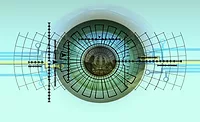Incorporating The Human Element Into Security Systems
Technology is changing the practice of security but still hasn't diminished the importance of the human element. Technologies such as video surveillance, access control, video analytics and command and control software can make companies and institutions more secure largely by providing better information about security threats and events to enable security personnel to respond.
The fact is, real-time response by a human being is the desired outcome of even today's latest technology innovations. That means that security officers continue to be a critical element of every security system. And yet our industry has historically considered these two disciplines – technology and manpower – as completely separate entities. The sales channels are separate, and the markets have evolved almost completely independently.
We have all seen examples of gadgetry that was developed with little regard for usability or the level of expertise needed by the user. Alternatively, one could question whether the guard services market – largely cost-driven – has sufficiently addressed the need for training to ensure a workforce that can fully leverage the benefits of technology. New technology continues to provide tools to enable security officers to do their jobs more effectively. It follows, therefore, that the security officer should be considered an integral part of a client's security system and a strategic part of the client's business.
For example, video cameras can put additional ‘eyes’ on possible security threats, but a qualified and attentive officer must be available to respond if something happens. Video can extend the ‘range’ of an officer's attention, but only if it makes that useable information available to the officer without interfering with his other duties. Clearly, an officer should not have to sit and view a roomful of video monitors instead of, say, patrolling a site. Rather, in case of an alarm, he should have access to that video on a handheld device. Return on investment comes not only from employing fewer security officers with the latest technologies. It also comes as a benefit of the greater productivity made possible by an overarching approach encompassing both.
It is at the critical interface of manpower and technology that the greatest cost efficiencies related to security management can be gained. Products must be designed to fulfill the information needs of the workforce. Personnel training and recruitment should be designed to provide the skill sets security officers need to interface effectively with security systems and to expand their duties to better leverage the efficiency advantages of technology innovation. Familiarity and expertise with both disciplines create the greatest opportunities to maximize the overall effectiveness of a security practice.
Suppliers can best serve the security market by broadening their approach to include not only the need for interoperable products, but the need for interoperability between products and people, between technology and manpower. This has been a missing element of the familiar convergence of products and services being offered by today's security manufacturers and providers. The approach needs to extend beyond interoperable products, and G4S is leading the industry in making this shift.
G4S is building on Wackenhut's legacy as the premier supplier of security manpower; beginning by acquiring several companies related to security technology including Nuclear Security Services Corp., Touchcom, Inc., Adesta and AMAG Technology. Also contributing to the new approach are internally developed innovations such as a software platform that can operate on a range of hand-held devices and a new state-of-the-art remote video monitoring center in Burlington, MA. G4S' expanded range of services also includes security consulting, design and engineering; compliance and risk management; and facilities management.
In the future, security officers will be equipped with more and more technology, which will contribute as a force multiplier and a productivity tool. Using technology to extend and enhance the reach of a protection system beyond security officers acting alone can impact a business's risk factors in a positive way. Advances in wireless and advanced video will enable security officers to do more with less. They will have access to more and more information, often using hand-held devices. The information must be presented in a way that is understandable and actionable by the security officers, and their interface with systems should be as simple as possible, so as not to interfere with important duties. Powerful technologies can work to supplement the effectiveness of security officers, providing access to real-time event monitoring, situation management and business intelligence.
The future of security innovation is the delivery of carefully integrated solutions, incorporating both manpower and technology, and customized to meet a client's specific needs. The time has come for a broad-based approach to deliver the next generation of security productivity and success.
The fact is, real-time response by a human being is the desired outcome of even today's latest technology innovations. That means that security officers continue to be a critical element of every security system. And yet our industry has historically considered these two disciplines – technology and manpower – as completely separate entities. The sales channels are separate, and the markets have evolved almost completely independently.
We have all seen examples of gadgetry that was developed with little regard for usability or the level of expertise needed by the user. Alternatively, one could question whether the guard services market – largely cost-driven – has sufficiently addressed the need for training to ensure a workforce that can fully leverage the benefits of technology. New technology continues to provide tools to enable security officers to do their jobs more effectively. It follows, therefore, that the security officer should be considered an integral part of a client's security system and a strategic part of the client's business.
For example, video cameras can put additional ‘eyes’ on possible security threats, but a qualified and attentive officer must be available to respond if something happens. Video can extend the ‘range’ of an officer's attention, but only if it makes that useable information available to the officer without interfering with his other duties. Clearly, an officer should not have to sit and view a roomful of video monitors instead of, say, patrolling a site. Rather, in case of an alarm, he should have access to that video on a handheld device. Return on investment comes not only from employing fewer security officers with the latest technologies. It also comes as a benefit of the greater productivity made possible by an overarching approach encompassing both.
It is at the critical interface of manpower and technology that the greatest cost efficiencies related to security management can be gained. Products must be designed to fulfill the information needs of the workforce. Personnel training and recruitment should be designed to provide the skill sets security officers need to interface effectively with security systems and to expand their duties to better leverage the efficiency advantages of technology innovation. Familiarity and expertise with both disciplines create the greatest opportunities to maximize the overall effectiveness of a security practice.
Suppliers can best serve the security market by broadening their approach to include not only the need for interoperable products, but the need for interoperability between products and people, between technology and manpower. This has been a missing element of the familiar convergence of products and services being offered by today's security manufacturers and providers. The approach needs to extend beyond interoperable products, and G4S is leading the industry in making this shift.
G4S is building on Wackenhut's legacy as the premier supplier of security manpower; beginning by acquiring several companies related to security technology including Nuclear Security Services Corp., Touchcom, Inc., Adesta and AMAG Technology. Also contributing to the new approach are internally developed innovations such as a software platform that can operate on a range of hand-held devices and a new state-of-the-art remote video monitoring center in Burlington, MA. G4S' expanded range of services also includes security consulting, design and engineering; compliance and risk management; and facilities management.
In the future, security officers will be equipped with more and more technology, which will contribute as a force multiplier and a productivity tool. Using technology to extend and enhance the reach of a protection system beyond security officers acting alone can impact a business's risk factors in a positive way. Advances in wireless and advanced video will enable security officers to do more with less. They will have access to more and more information, often using hand-held devices. The information must be presented in a way that is understandable and actionable by the security officers, and their interface with systems should be as simple as possible, so as not to interfere with important duties. Powerful technologies can work to supplement the effectiveness of security officers, providing access to real-time event monitoring, situation management and business intelligence.
The future of security innovation is the delivery of carefully integrated solutions, incorporating both manpower and technology, and customized to meet a client's specific needs. The time has come for a broad-based approach to deliver the next generation of security productivity and success.
Looking for a reprint of this article?
From high-res PDFs to custom plaques, order your copy today!







